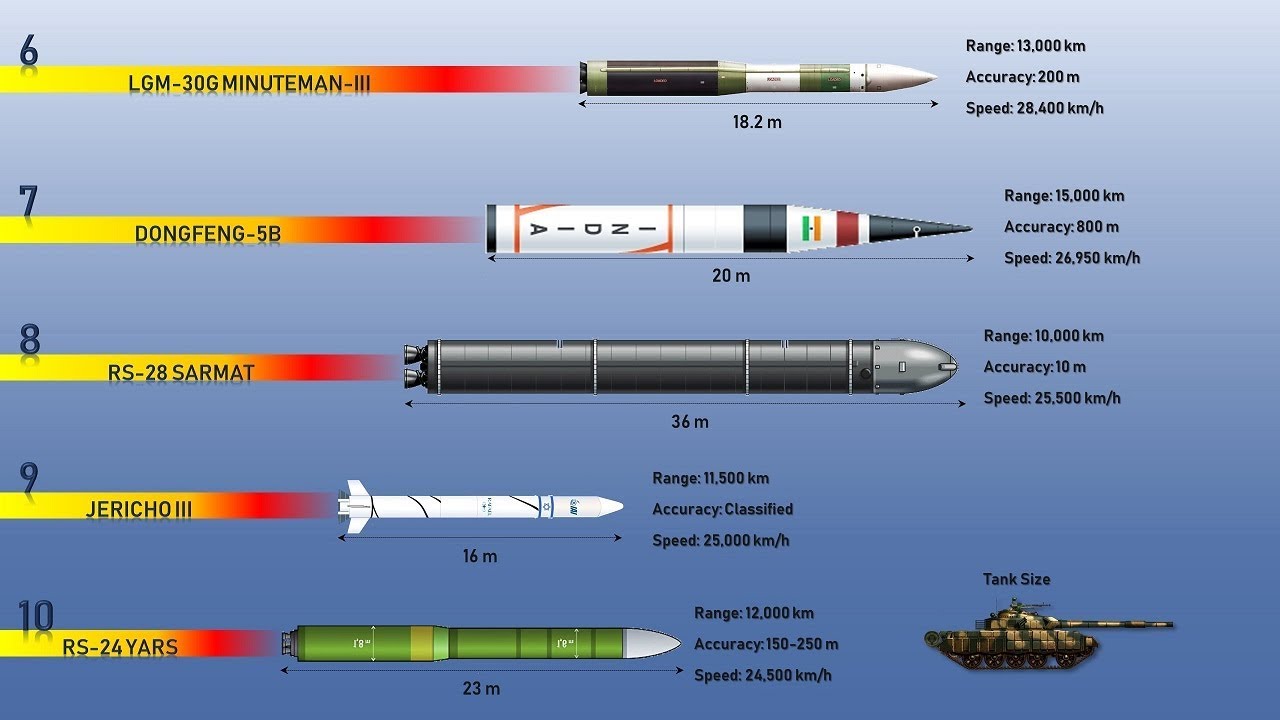Table Of Content

Other successful uses were by the Dutch colonial services in Celebes and by Russia in a number of engagements in the Turkistan War. The USAF adopted the AGM-86 for its bomber fleet while AGM-109 was adapted to launch from trucks and ships and adopted by the USAF and Navy. The truck-launched versions, and also the Pershing II and SS-20 Intermediate Range Ballistic Missiles, were later destroyed under the bilateral INF (Intermediate-Range Nuclear Forces) treaty with the USSR. The limited time available to attack the formidable design problems of these systems doomed the programs, and they never became operational. There is indication that their first use was by the Mongols in the Battle of Legnica in 1241.
How US planes, missiles protected Israel against Iran drone attack - USA TODAY
How US planes, missiles protected Israel against Iran drone attack.
Posted: Mon, 15 Apr 2024 15:04:29 GMT [source]
Integrated Guided Missile Development Programme (IGMDP)
Kelsey D. Atherton is a military technology journalist who has contributed to Popular Science since 2013. He covers uncrewed robotics and other drones, communications systems, the nuclear enterprise, and the technologies that go into planning, waging, and mitigating war. World War II saw the expenditure of immense resources and talent for the development of rocket-propelled weapons.
Efficiency in modern warfare
According to the Federation of American Scientists, a ballistic missile is one that has a ballistic trajectory over most of its flight path. What that means is that once the missile burns up the fuel that propels it, the missile keeps moving, the same way that a bullet does after it's been fired out of a gun. It follows a path determined by the speed of its launch and the force of gravity trying to pull it back toward the Earth's surface.
Examples of Cruise missiles
Missiles range in size from small tactical weapons with ranges of only a few hundred feet to considerably bigger strategic weapons with ranges of several thousand kilometres. Missiles are an important part of the defence system of any country, apart from its armed forces. A propeller-driven underwater missile is called a torpedo, and a guided missile powered along a low, level flight path by an air-sucking jet engine is known as a cruise missile. Cruise missiles are guided, jet or propeller-driven projectiles that can fly at low altitudes, follow a flexible path, and are capable of precision strikes.

Fact Sheet: Ballistic vs. Cruise Missiles
After the booster burns out, the payload section continues on a ballistic trajectory to the target. Cruise missiles have rocket or jet engines that are powered during the entire flight. It allows the missile to cruise low through the atmosphere, sometimes just above ground level.
Cost and benefit: Israel’s very expensive defence against aerial threats - The Indian Express
Cost and benefit: Israel’s very expensive defence against aerial threats.
Posted: Thu, 18 Apr 2024 14:19:13 GMT [source]
As gravity pulls the ballistic warhead back to Earth, speeds of several times the speed of sound are reached. A ballistic missile (BM) is a type of missile that uses projectile motion to deliver warheads on a target. These weapons are powered only during relatively brief periods—most of the flight is unpowered. Short-range ballistic missiles (SRBM) typically stay within the Earth's atmosphere, while most larger missiles are exo-atmospheric. These weapons are in a distinct category from cruise missiles, which are aerodynamically guided in powered flight and thus restricted to the atmosphere. Cruise missiles are essentially guided flying bombs - unmanned heavier than air aircraft capable of sustained, powered flight from launch until it reaches the target.
rocket and missile system
The propulsive jet evidently added to the range of these weapons and acted as an incendiary agent against targets. In a more restrictive sense, rocket propulsion is a unique member of the family of jet-propulsion engines that includes turbojet, pulse-jet, and ramjet systems. The rocket engine is different from these in that the elements of its propulsive jet (that is, the fuel and oxidizer) are self-contained within the vehicle. Therefore, the thrust produced is independent of the medium through which the vehicle travels, making the rocket engine capable of flight beyond the atmosphere or propulsion underwater. The turbojet, pulse-jet, and ramjet engines, on the other hand, carry only their fuel and depend on the oxygen content of the air for burning.

Short-range subsonic
From 16 to 48 Katyushas were fired from a boxlike launcher known as the Stalin Organ, mounted on a gun carriage. Maximum ranges of Congreve rockets were from one-half mile to two miles (0.8 to 3.2 kilometres), depending upon size. They were competitive in performance and cost with the ponderous 10-inch mortar and were vastly more mobile. Congreve’s metal rocket bodies were equipped on one side with two or three thin metal loops into which a long guide stick was inserted and crimped firm. Weights of eight different sizes of these rockets ranged up to 60 pounds. In addition to aerial bombardment, Congreve’s rockets were often fired horizontally along the ground.
For this reason, these varieties of jet engine are called air-breathing and are limited to operation within the Earth’s atmosphere. Modern cruise missiles are capable of travelling at supersonic or high subsonic speeds, are self-navigating, and are able to fly on a non-ballistic, extremely low-altitude trajectory. Cruise missiles are guided, air-breathing, and offer in-flight maneuverability, while ballistic missiles are unguided, rocket-powered, and follow a high-arching trajectory. Ballistic missiles are known for their high speed and long-range capabilities, making them suitable for delivering strategic or long-range strikes. Unlike cruise missiles, they lack in-flight manoeuvrability but rely on their high velocity and trajectory to reach their intended targets.
A five-inch rocket with an explosive warhead was developed in Great Britain. These rockets, fired from specially equipped naval vessels, were used in heavy coastal bombardment prior to landings in the Mediterranean. The next significant development in rocketry occurred about the middle of the 19th century. William Hale, a British engineer, invented a method of successfully eliminating the deadweight of the flight-stabilizing guide stick. He developed various designs, including curved vanes that were acted upon by the rocket jet. These rockets, stabilized by means of spin, represented a major improvement in performance and ease of handling.
Cruise missiles are self-propelled, guided weapons that can be launched from various platforms, including aircraft, ships, or ground-based launchers. They are designed to fly at low altitudes and can be programmed to follow a specific flight path, often hugging the terrain, which makes them difficult to detect and intercept. Cruise missiles can carry various types of warheads and are used for precise, long-range strikes on specific targets, such as military installations, infrastructure, or high-value targets.
The main outcome of the United States Navy submarine missile project was the SSM-N-8 Regulus missile, based upon the V-1. Boost Phase begins at launch and lasts until the rocket engine(s) stops firing and the missile begins unpowered flight. Things got real, though, on Jan. 7, 2020, when Iran launched more than a dozen ballistic missiles at two Iraqi military bases housing U.S. troops. It was Iran's retaliation for the U.S. drone strike that killed Iran Gen. Qassem Soleimani on Jan. 3, 2020.

No comments:
Post a Comment